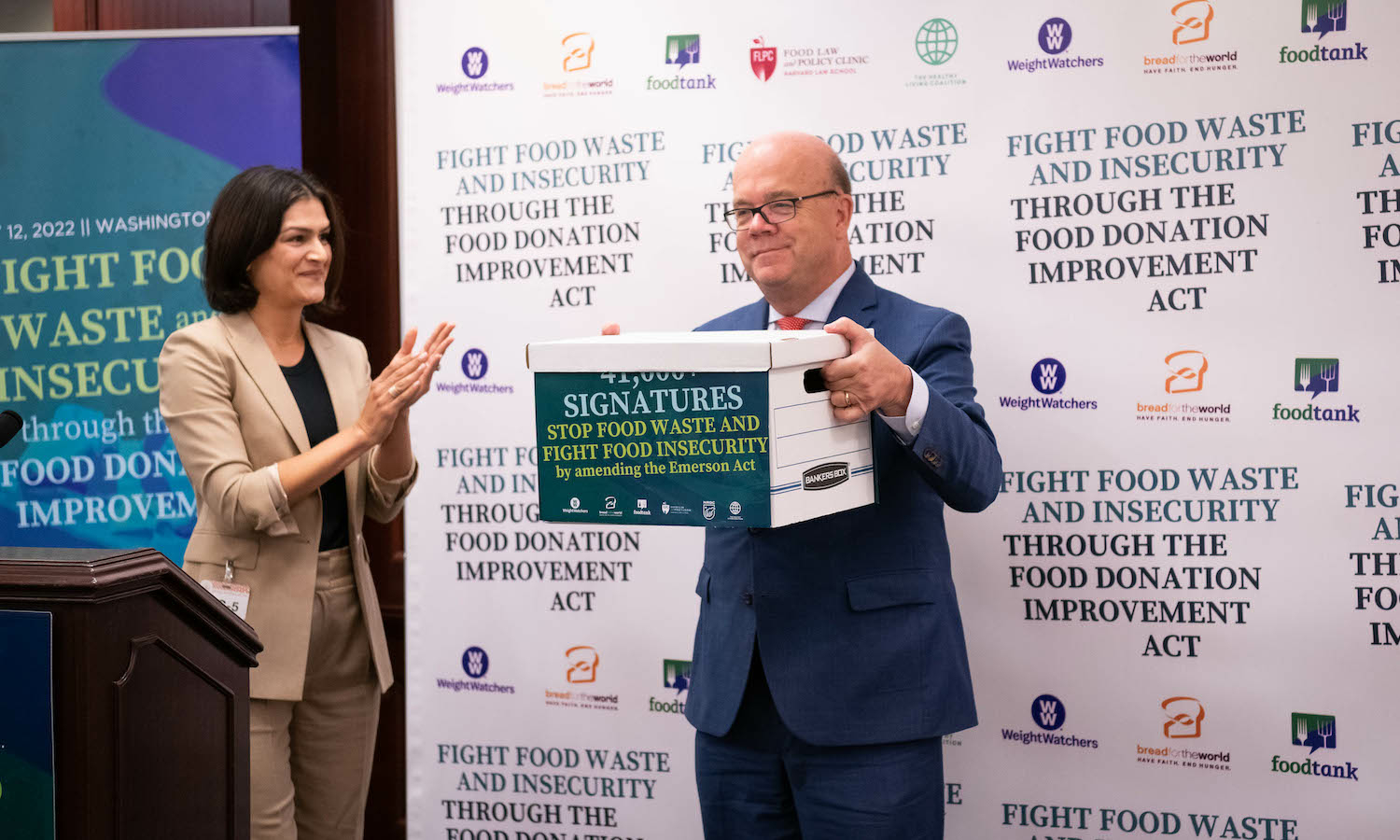In the Middle East and North Africa (MENA) region, countries use more than 80 percent of their water resources in agriculture, according to a report by the United Nations Children’s Fund. As climate change and migration exacerbate already scarce water supplies, The Blue Peace Strategy is working to promote cross-border cooperation and help ensure food security and political stability in the region.
According to the REACH Initiative, more than 5 million people along the Euphrates River, which stretches from Turkey through Syria and Iraq, are at risk of water shortages and power outages. Among this number are 1 million displaced Syrians. Rising temperatures, reduced rainfall and a historic drought are lowering the river’s water levels, with humanitarian groups warning of an unprecedented water and agricultural crisis.
“Water is life. Without water, there is no life, there is no development,” André Wehrli, senior water policy adviser at the Swiss Agency for Development and Cooperation (SDC), tells Food Tank. “Fair and equitable access to water is needed for long-term peace and stability.”
Wehrli advises the SDC Blue Peace Strategy, an initiative that aims to promote cooperation on water and generate peace in the MENA region, the region with the greatest water scarcity in the world. Of the 33 most water-stressed countries, 14 are in the Middle East, according to the World Resources Institute.
The Blue Peace Strategy fosters relationship building between countries by combining ongoing dialogue with benchmarking, knowledge and capacity building, and building trust and confidence.
The World Economic Forum’s Global Risk Report 2022 names water security as one of the top risks in terms of impact for the tenth consecutive year. In 2017 alone, water was a major factor in 45 global conflicts. And an article published in Geneva Solutions exposes the use of water as a weapon of war and as an instrument of peace.
“While international treaties and water law are absolutely necessary, they are not a miracle solution,” explains Wehrli. “It is important to strengthen the entire global water governance system.”
Wehrli says that building relationships enables cross-border cooperation, which is essential to achieving peace. “It’s not just about water allocation. We need a new narrative; water is a key factor for social and economic development.”
The SDC is working to mitigate the conflicts in Egypt and Ethiopia over the Grand Ethiopian Renaissance Dam, as well as using the Yarmouk River as common ground for negotiations between Jordan, Syria and Israel.
“When you look at a complex region like MENA, you understand that there are many factors that can make or break access to water cooperation,” Wehrli tells Food Tank. These factors include climate change, poor governance and ineffective water management by the agricultural sectors.
A recent COSUDE report finds that agriculture is the main consumer of water. Wehrli tells Food Tank that effective water management in agriculture can help mitigate the impacts of climate change. Along the Jordan River, farmers typically get 60 percent of the water resources they claim. Werhli says that many are turning to water conservation methods, such as drip irrigation, to cope with water shortages. But when climate change-induced drought leaves farmers without water, “countries must adapt in other ways. That is already a challenge for countries experiencing water scarcity,” Wehrli tells Food Tank.
“If you look at the entire food supply chain, 30 to 50 percent of food is wasted. Improving the supply chain and logistics could create opportunities to improve water efficiency,” Anders Jägerskog, Senior Water Resources Management Specialist at the World Bank’s Water Global Practice, tells Food Tank.
Many MENA countries experiencing water scarcity may be dependent on food imports, Jägerskog says, raising food security concerns. Supply chain disruptions due to the Russian-Ukrainian war also increase the need for more water and arable land to meet food security needs.
Jägerskog explains that, in addition to the climate crisis, population growth and dependence on global water imports challenge water cooperation in the MENA region. Water scarcity also creates hygiene and sanitation concerns by exacerbating disease and other health risks in refugee camps and host communities.
Both Jägerskog and Wehrli still maintain a positive outlook on water cooperation in the MENA region. According to Jägerskog, in some cases, “when countries do not cooperate on other issues, they cooperate on the water issue.”
And while many countries grappling with political tension, migration and the climate crisis continue to “blame their neighbor” for water shortages, Wehrli adds that overall there is more cooperation than conflict.
“Usually what makes the headlines is when there is conflict,” explains Jägerskog. “Water scarcity not only increases conflict: most countries want to work together.” The “interconnectedness of water speaks to the need for countries to come together”.
Articles like the one you just read are made possible through the generosity of Food Tank members. Can we count on you to be part of our growing movement? Become a member today by clicking here.
Image courtesy of NASA, Unsplash
What best describes an adaptation?
Given Choice Says adaptation means heritable trait. Read also : ‘Very scary’: Email reveals US alarm about China-Solomons pact. That means an organism can be passed on to the next generation to help survive and reproduce in the environment.
What is an adaptation in biology? Adaptation, in a biological sense, is a characteristic of an organism that makes it fit for its environment or for its particular way of life.
What are the 3 characteristics of an adaptation?
Adaptations are unique characteristics that allow animals to survive in their environment. There are three types of adaptations: structural, physiological, and behavioral.
Which is true about adaptations?
What is true in the adaptations? To scientists, an adaptation is any characteristic that helps an organism survive or reproduce. Adaptations can be both physical and behavioral. Read also : New York State Law to Reduce Hunger and Food Waste – Food Tank. Most adaptations happen slowly: they are traits that are inherited over many generations.
What is a good example of an adaptation?
Examples include the long necks of giraffes for feeding in the treetops, the streamlined bodies of fish and aquatic mammals, the lightweight bones of birds and flying mammals, and the long, dagger-shaped canines of carnivores. This may interest you : Americans’ top post-pandemic travel priorities.
What is adaptation give the 3 types of adaptation?
Adaptations are unique characteristics that allow animals to survive in their environment. There are three types of adaptations: structural, physiological, and behavioral.
What are adaptations give 3 examples? Examples include the long necks of giraffes for feeding in the treetops, the streamlined bodies of fish and aquatic mammals, the lightweight bones of birds and flying mammals, and the long, dagger-shaped canines of carnivores.
What are adaptations and the 3 categories of adaptations?
Adaptations are any physical or behavioral characteristics of an animal that help it survive in its environment. These features fall into three main categories: body parts, body coverings, and behaviors. Any or all of these types of adaptations play a critical role in an animal’s survival.
Which is an adaptation?
An adaptation is any inherited trait that helps an organism, such as a plant or animal, survive and reproduce in its environment.
What is adaptation and types of adaptation?
The three types of adaptations include structural, behavioral, and physiological. Structural adaptation is a phenomenon in which the physical characteristics of an organism help it adapt to the environment. The organism changes its physical characteristics according to the physical environmental conditions in which it lives.
What is drought mitigation?
Drought mitigation measures include a large number of actions, which can be grouped into three broad categories: increasing supply, reducing demand and minimizing the impact of drought. Each category affects the physical, economic, and social impacts of drought in different ways.
What is a drought and how can it be prevented? Drought is the condition where there is no rain for a long time, sometimes months or even years in a region. Droughts can be prevented through the construction of dams and reservoirs, wells, good agricultural practices, and water conservation through various other methods.
What does a drought means?
A drought is defined as “a period of abnormally dry weather long enough for the lack of water to cause a serious hydrological imbalance in the affected area.” -Glossary of Meteorology (1959).
What are the solutions of droughts?
1. Rainwater harvesting. This is an easy solution for droughts and can be easily used in the home. With rainwater harvesting, households can store the water they get from rain and then use it when they need it in dry conditions, instead of depleting existing water bodies like rivers.
What are the examples of eco innovations that reduce environmental pollution and global warming process?
Examples of eco-innovation are: renewable energy sources, energy recovery from solid waste, use of waste for material recovery, production of fertilizers from wastewater, eco-products and various types of management systems ( Panapanaán, V.
What technological innovations should the world develop to protect the environment? Smart collars integrated with GPS, meters and sensors to keep track of endangered species such as rhinos and elephants. Remote monitoring of wildlife sounds and noises to detect any predator damage or natural distress. SIM-based collars for animals near human habitats to reduce animal-human conflicts.
What are some examples of environmental technology give at least 5?
examples
- Hydroelectricity.
- Wind power.
- Wind turbine.
- Ocean thermal energy conversion.
- Solar energy.
- Photovoltaic.
- Wave energy.
- electric vehicle
What is eco-friendly innovation?
Eco-innovation is a new business approach that promotes sustainability throughout the entire life cycle of a product, while increasing a company’s performance and competitiveness.
How can we use technology to reduce environmental pollution?
Facilitative Technologies centrifuges can reduce the amount of solids in wastewater, which reduces water pollution. Catalytic converters in engine exhaust systems can reduce air pollution. There are many examples of technologies helping other technologies to be cleaner.






